|
How The Castle Pictures Are Built Up These pages are being added in response to enquiries about the authenticity of aspects of the castles in the final reconstructions. Andrew Spratt has a wealth of knowledge and has carried out extensive research on each of the reconstructions. As it might be interesting and add another dimension to the Castles section Andrew has agreed to provide some further background information that we will add here from time to time in order to help answer some of the questions being posed on aspects of the reconstructions. Scottish Castle Reconstructions I have two very simplified examples of the methods I use to piece together my conjectural reconstructions of Scottish castles (though the majority research required for reconstructions tends to involve far more complex work depending on the state of the ruin and the amount of archaeological, architectural and recorded evidence available.)
The second example is MacDuff's castle in Fife. Unfortunately one of it's towers was pulled down in the 1960's to make it 'safe'. So I've had to use a print of the castle from the 1800's to impose the original dimensions of the two towers combined with the detail from the present ruin. When reconstructing there are are many tell tale signs to look out for that might be missed by the untutored eye. The marks of lean-to buildings, the position of turnpike stairwells (usually capped by conical roofs), the remains of bartizans (half turrets at battlement level), machicolations (spaces for dropping stones, hot oil, etc on would-be attackers) and posthole marks for interior floor levels. I use these reference points to rebuild the castle's original shape and form level by level. Braal Castle Near Halkirk in Caithness In most cases I project a slide of the ruin selected for reconstruction onto an A3 sheet of plain paper. I then pencil round the outline noting the location of windows, bartizans, machicolations etc. The second stage is to draw the reconstruction in pen onto the pencil outline using ,I must admit a ruler since these elements have to be measured exactly to fit the site, almost as if I were rebuilding the castle stone by stone. The next stage is to use this A3 pencil outline and pen drawing as a template to trace through onto a sheet of embossed water-colour paper. I then detail and colour this finished drawing with pencil, chalk and water-colour paint to complete the finished reconstruction. Hopefully by doing the reconstruction in these stages instead of simply drawing free hand there is less chance of mistakes in the finished painting. Old Wick Castle Sketch And Final
Reconstruction
Having said that there is always an element of speculation in such conjectural reconstructions. But I do stay within strict guidelines with regards as to what was architecturally possible and plausible at that particular time in Scotland, whether it be a 1350's L-plan tower-house like Stoneypath, or an early 1300's courtyard castle like Bothwell or a late 1300's curtain wall like Tantallon. Each castle is unique and most if not all are the development of many centuries of additional buildings and are not always typically 'Scottish' in design. For Example Castle Sween (1100's) on the west coast of Argyll is built round a Norman keep, Hailes castle (1200's) in East Lothian started life as an 'English' manor house, while Tantallon castle (1360) also in East Lothian was based on a 'French' chateau, even Barnes castle (1580) near Haddington was based on a classic 'Spanish' courtyard plan. Further Examples Of Castle Pictures In Progress See Also |

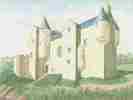
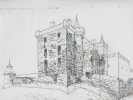
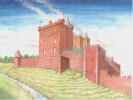
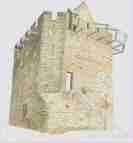
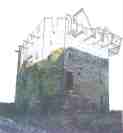
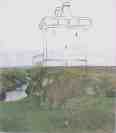
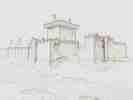
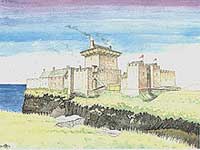
 Berwick
Castle
Berwick
Castle